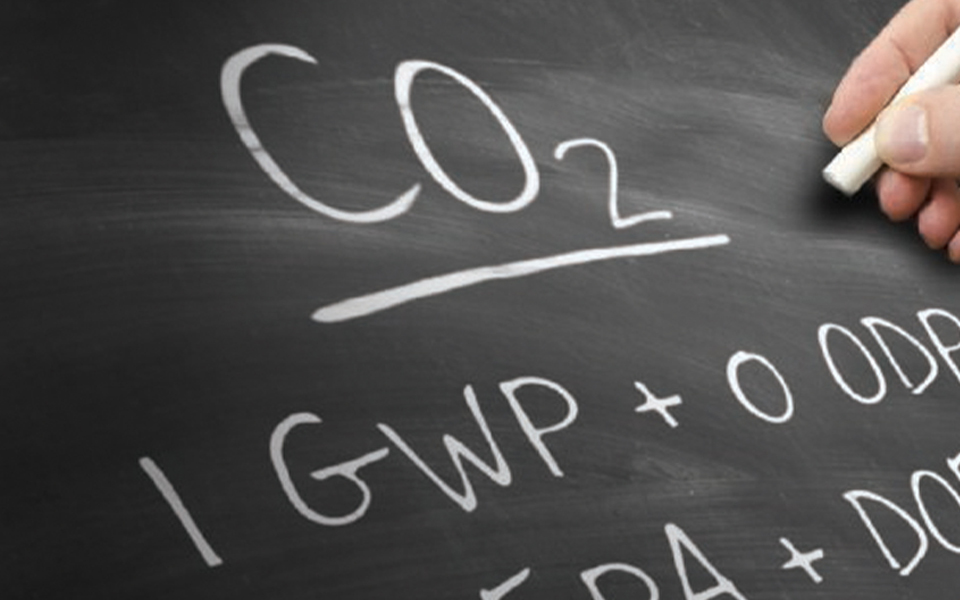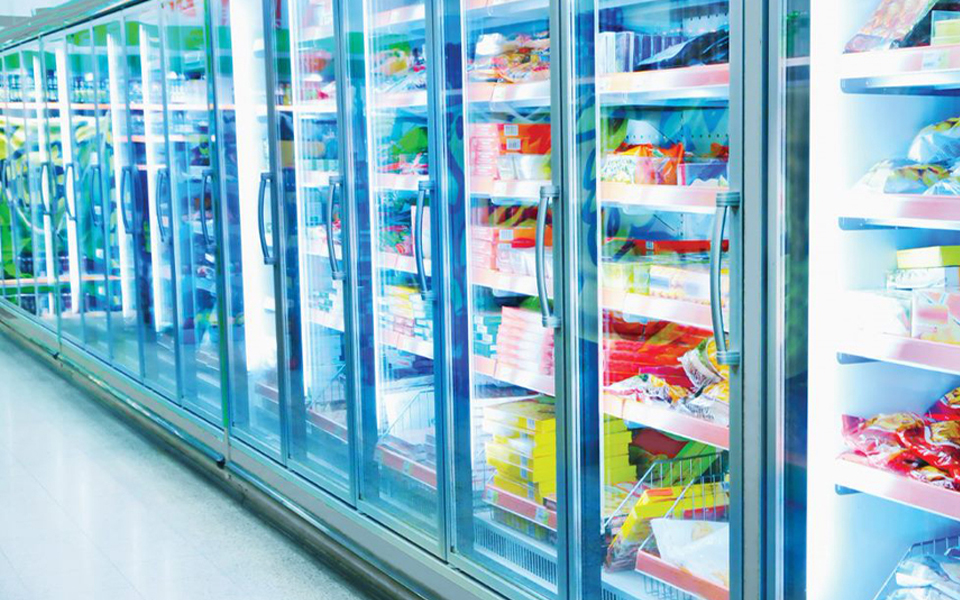CO₂ as a refrigerant – introduction to R-744 refrigeration systems

In post eight of our CO2 as a Refrigerant blog series, I provide an introduction of leading CO2 commercial refrigeration architectures, including: booster and cascade systems.

Reviewing the application considerations for R-744
As I’ve explained in previous blogs in this series, the properties of R-744 affect how the refrigerant is applied. For example, it’s important to review these key concepts:
- Compared to hydrofluorocarbon (HFC) refrigerants, the high density and volumetric capacity of R-744 impact the requirement for less compressor displacement, typically ⅕ of that needed for R-404A. However, the motor size is similar, since the work requirement is approximately the same. Smaller pipe diameters are another factor impacting system design, especially on the suction side of a system.
- Because of the higher pressures of R-744, all components require a higher maximum pressure rating.
- The high discharge temperatures of R-744 (because of the high index of compression) drive the need for two-stage compression for low-temperature (LT) systems that reject heat to ambient air.
- The low critical point temperature of R-744 results in differences in system design and control.
- CO2 booster systems were called “transcritical booster” because of their ability to “transition” from subcritical to supercritical operation. In supercritical operation, the heat rejection takes place above the critical point of the refrigerant for ambient temperatures greater than 73 to 75 °F (23 to 25 °C).
In the retail sector, these properties result in R-744 being used mainly in the following types of systems:
- CO2 booster systems: As the most widely adopted CO2 system architecture around the globe, this all-CO2 system provides cooling for both LT and medium-temperature (MT) loads. The LT range is typically -30 to -4 °F (-35 to -20 °C); MT range is typically 14 to 25 °F (-10 to 4 °C). The “booster” system is designed to receive the LT compressor discharge into the MT suction, which is then discharged into a gas cooler, typically located on the roof.
- CO2 single-stage (MT condensing unit): An emerging condensing unit option globally, this simple, single-stage architecture covers MT loads while also leveraging the potential for heat reclaim when required.
- CO2 cascade: R-744 serves as the low-stage refrigerant in cascade designs, where R-744 the LT compressor discharge is always operating in its subcritical range. Heat rejected by condensing R-744 is absorbed by the evaporating high-stage refrigerant in a conventional system, which would typically be another lower-GWP A1 or A2L refrigerant option.
Due to increasing environmental regulations on refrigerants and the growing sustainability requirement, all-CO2 booster systems have emerged as the primary CO2 system architecture. The next blog in this CO2 as a Refrigerant series will take a closer look at CO2 single-stage systems.

CO2 as a Refrigerant — Criteria for Choosing Refrigerants
by Andre Patenaude | Efficiency & Refrigerant Regulations, Refrigerants
This is post two of CO2 as a Refrigerant, a blog series covering the fundamental considerations...

CO2 as a Refrigerant – Properties of R-744
by Andre Patenaude | Efficiency, Efficiency & Refrigerant Regulations, Refrigerants
This is post three of CO2 as a Refrigerant, a blog series covering the fundamental considerations...

CO2 as a Refrigerant – Comparison of R-744 with Other Refrigerants
by Andre Patenaude | Efficiency, Efficiency & Refrigerant Regulations, Refrigerants
In post six of our CO2 as a Refrigerant blog series, I will compare CO2 to traditional and...
The post CO2 as a Refrigerant – Introduction to R-744 Refrigeration Systems appeared first on Copeland E360 Blog.